COBS News archive
ESA pinpoints 3I/ATLAS’s path with data from Mars
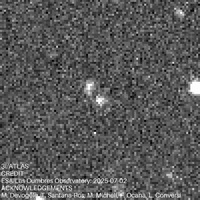
Since comet 3I/ATLAS, the third known interstellar object, was discovered on 1 July 2025, astronomers worldwide have worked to predict its trajectory. ESA has now improved the comet’s predicted location by a factor of 10, thanks to the innovative use of observation data from our ExoMars Trace Gas Orbiter (TGO) spacecraft orbiting Mars.
Comet 3I/ATLAS has sprouted an unusual tail
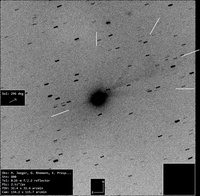
An interstellar visitor lights up the Red Planet’s sky

ESA’s Mars orbiters have observed comet 3I/ATLAS, only the third interstellar comet ever discovered. The faint, distant object revealed a glowing coma as it was heated by the Sun. Researchers are still studying the data to understand its makeup and origins. This rare event also foreshadows future missions like the Comet Interceptor, designed to chase such elusive visitors.
Where do 3I/ATLAS and other interstellar visitors come from?
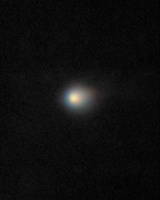
Bright Comet suprise
Interstellar Comet imaged during Lunar eclipse
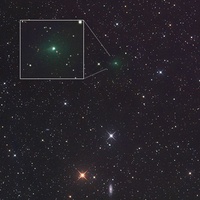
On Sept 7th, darkness fell across the Kalahari Desert as Earth's shadow enveloped the full Moon. It was a total lunar eclipse--and the perfect time to photograph an interstellar comet. "We took advantage of the total lunar eclipse to take a deep image of Comet 3I/ATLAS under the dark skies of Namibia," says amateur astronomers Michael Jäger and Gerald Rhemann. Here is what they saw.
NASA’s Webb Space Telescope Reveals Secrets of Interstellar Comet 3I/ATLAS
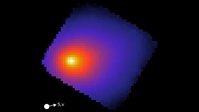
Our solar system has a new interstellar visitor: Meet 3I/ATLAS
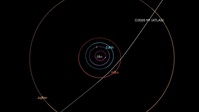
Is 3I/ATLAS really a Comet?
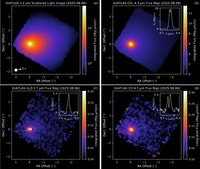
The most intriguing mystery in astronomy today is the nature of interstellar object 3I/ATLAS. Most astronomers believe it is a comet. However, iconoclast Avi Loeb of Harvard University makes the case that it might be something else--like alien tech.
Hubble just snapped the clearest-ever picture of a rare interstellar comet
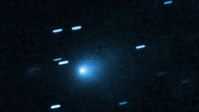
This interstellar comet may be a frozen relic from before the Sun
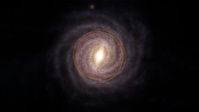
A newly discovered comet, 3I/ATLAS, may be the most ancient visitor ever detected, potentially older than our solar system itself. Unlike previous interstellar objects, this ice-rich comet seems to originate from the thick disk of the Milky Way, a region filled with ancient stars. First spotted in July 2025, it’s already showing signs of activity and could help scientists understand more about galactic chemistry and the origins of planetary systems.
Tycho Tracker: A comperhensive all‐in‐one tool for Comet photometry

In the latest issue of The Comet's Tail, the British Astronomical Association (BAA) highlights "Tycho Tracker: A Comprehensive All-in-One Tool for Comet Photometry," an article detailing a significant advancement in comet observation technology. Tycho Tracker emerges as a powerful software solution, streamlining the process of comet photometry for both amateur and professional astronomers.
More in recent issue of The Comet's Tale: https://britastro.org/wp-content/uploads/2015/11/tail43.pdf
Good News and bad News about Comet Atlas
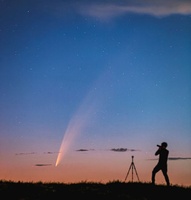
Astrophysicists reveal structure of 74 exocomet belts orbiting nearby stars in landmark survey

Astrophysicists led by a team from Trinity College Dublin have -- for the first time -- imaged a large number of exocomet belts around nearby stars, and the tiny pebbles within them. The crystal-clear images show light being emitted from these millimetre-sized pebbles within the belts that orbit 74 nearby stars of a wide variety of ages -- from those that are just emerging from birth to those in more mature systems like our own Solar System.
Sungrazing comet at dawn

Philae’s extraordinary comet landing relived
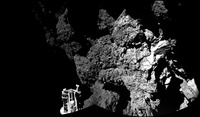
On 12 November 2014, after a ten year journey through the Solar System and over 500 million kilometres from home, Rosetta’s lander Philae made space exploration history by touching down on a comet for the first time. On the occasion of the tenth anniversary of this extraordinary feat, we celebrate Philae’s impressive achievements at Comet 67P/Churyumov-Gerasimenko.
NASA's Webb Reveals Unusual Jets of Volatile Gas from Icy Centaur 29P
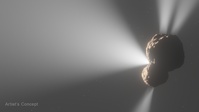
Scientists revealed unexpected outgassing from this object galloping across the outer solar system.
Similar to the Ancient Greek mythological creature of the same name, centaurs in astronomy are in an in-between dynamical phase: leaving their distant and stable orbits beyond Neptune and migrating to the inner solar system, while also entering an active cometary phase. Being stored for billions of years in the freezing confines of the outer solar system, they preserve key insights about the birth of our solar system, which are uniquely revealed as they slowly start to unfreeze in this transient stage.
Using NASA’s James Webb Space Telescope, a team of astronomers observed Centaur 29P/Schwassmann-Wachmann 1, one of the most active and intriguing objects in the outer solar system. The high degree of detail captured by the telescope led to the discovery of new, previously unknown jets of gas, which is helping inform theories about how centaurs and planets are formed.
A big new sungrazing comet
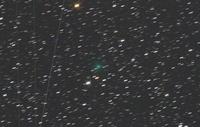
Comet Tsuchinshan-Atlas is heading for Earth
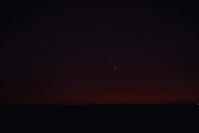
How to spot Comet Tsuchinshan-Atlas

Comet Tsuchinshan-Atlas is a bright comet that’s about to fly around the Sun and pass near Earth. It’s possible to see the comet in the pre-dawn sky right now, and in a couple of weeks, when the comet makes its closest approach to Earth, it may offer an even more impressive sight. Only time will tell for sure.
